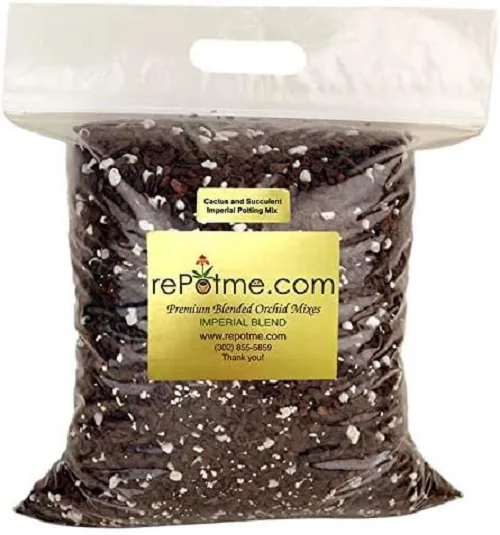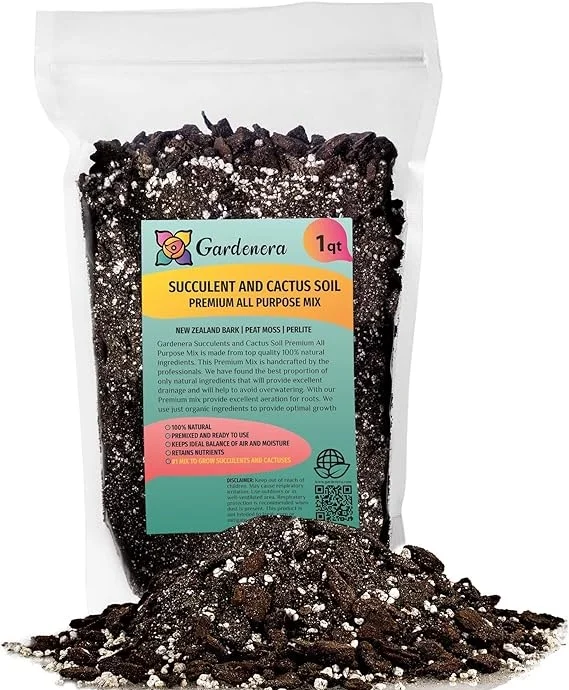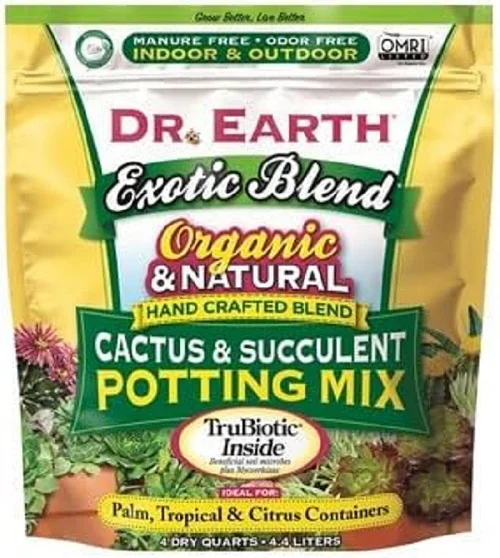Paddle Plant (Kalanchoe thyrsiflora) Indoor Care, Common Problems and Solutions
Some links in this post may be affiliate links
Paddle Plant (Kalanchoe thyrsiflora) prefers bright light to full sunlight, average warmth, moderate humidity and moderately moist, rich, well-drained soil coupled with monthly feeding in the growing season.
Kalanchoe thyrsiflora also called Desert Cabbage, FlapJack or White Lady is among the popular Kalanchoe varieties on account of its beautiful foliage.
FlapJack Kalanchoe forms a basal rosette of large, rounded, succulent, stalkless leaves which are grayish-green with red margins under bright light. The leaves are covered with a white powdery bloom called 'farina' or 'epicuticular wax'. Kalanchoe thyrsiflora is one of the best succulent plants for full sun.
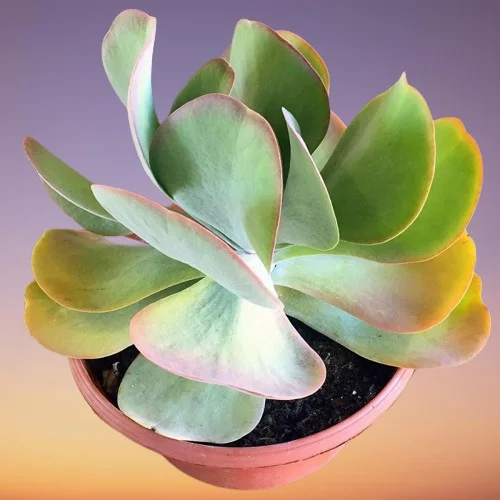
Botanical name: Kalanchoe thyrsiflora
Family: Crassulaceae
Common nmaes: Paddle Plant, Desert Cabbage, FlapJack, White Lady
Origin
Kalanchoe thyrsiflora is native to Botswana, Lesotho, South Africa and Swaziland.
How big do Kalanchoe thyrsiflora get?
Kalanchoe thyrsiflora is a compact plant which grows to a height of 1-2 feet only. On account of their small size, Kalanchoe thyrsiflora and its cousins Kalanchoe marmorata (Penwiper Plant) and Kalanchoe tomentosa (Panda Plant) are some of the best plants for the limited spaces.
Flower
The inflorescence in Paddle Plant is terminal and erect, borne on a 3 feet tall stalk which dies back after flowering. It is densley clustered with greenish waxy flowers with yellow recurved lobes, narrowly urn-shaped.
Is Kalanchoe thyrsiflora toxic?
Kalanchoe thyrsiflora like other Kalanchoe Plants is toxic to animals as indicated by ASPCA. It contains Calcium glycosides which are poisonous. Keep the plant away from the reach of kids, cats, dogs and other pets to avoid any mishaps.
Where to Buy
Kalanchoe Plants are a great addition to any plant collection, you may get them online from Etsy (Link to Etsy).
How do you care for Paddle Plant indoors?
To care for Paddle Plant indoors, provide bright light to full sunlight, average warmth of 16-260C, moderate humidity of 50-55% and moderately moist, fertile, well-drained soil coupled with monthly feeding in the growing season.
Kalanchoe thyrsiflora care does not require frequent repotting as it is a slow grower. Pruning is necessary to keep it tidy. Keep reading for more on these growing conditions and how to obtain them.
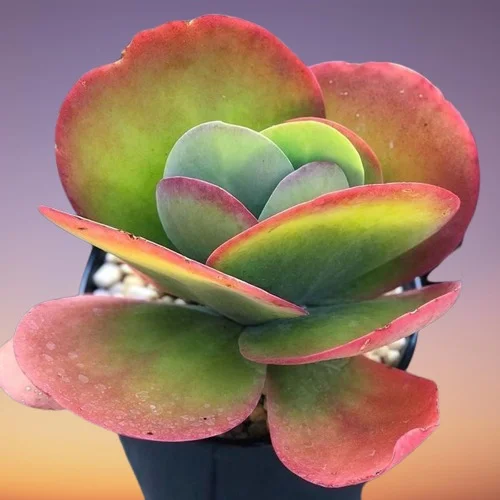
Light Requirements
Do Paddle Plants like full sun?
Paddle Plants grow best in bright light to full sunlight. Do not expose it to hot midday sunshine as it can scorch the leaves.
Where the natural light is not sufficient, the plant will be leggy and may stop growing. Therefore, use a full spectrum grow light to supplement it.
Rotate the pot regularly to ensure that the plant gets adequate light on all sides for uniform growth.
If you choose to grow your Flapjack Succulent outdoors, gradually acclimate it and place it in a shaded place to avoid scorching the leaves.
Watering
How often should I water Kalanchoe thyrsiflora?
Water your Kalanchoe thyrsiflora deeply in spring and summer while allowing the top 2-3 inches of soil to dry out between waterings. Keep the soil moderately moist and avoid overwatering to prevent rotting, wilting and drooping.
Significantly lessen watering in fall and winter as growth is minimal at this time to maintain the soil barely moist. However, do not let the soil dry out completely to prevent wilting and drooping leaves.
Use water that is at room temperature water to avoid shocking this tropical plant which can result in slow growth. Ensure to use chlorine-free water like rain water or filtered water to avoid leaf spots.
Always use a pot that has a drainage hole and free-draining soil to prevent waterlogging as it can result in root-rot and death of the plant.
Take care not to wet the leaves as it can lead to rotting or water from the bottom instead.
Temperature and Humidity
Paddle Plant thrives in an average warmth of 16-260C. The sudden change in temperature between day and night is excellent for this succulent plant.
Keep it away from drafts like windy doors and windows, air conditioning units, hot air vents and others to avoid flactuations in temperatures which can result in reduced growth and drooping leaves.
Kalanchoe thyrsiflora has no need for high humidity. Average room humidity of 50-55% is adequate for this plant. Make sure that there is good air circulation to prevent fungal diseases.
Potting Soil
The best soil for Paddle Plant should be rich in organic matter, loose and free-draining to avoid getting soggy soil. The soil should be loose enough to allow water to drain out fast enough. Cactus and succulents soil is ideal for the plant.
Fertilizer
Feed Paddle Plant with a balanced, liquid fertilizer monthly in the growing season (spring and summer) for lush growth. Take care not to overfeed as this plant is not a heavy feeder.
Stop feeding in fall and winter as growth is reduced at this time and feeding at this time can result in fertilizer burn; wilting and drooping leaves.
Every 1-2 months flush out accumulated salts by running a stream of water through the soil until it drains through the drainage hole.
Repotting
Repot Paddle Plant only when the plant becomes pot-bound. The pot should be only 1 size larger than the current one. Ascertain that the pot has a drainage hole to avoid getting soggy soil as it can lead to rotting.
Use a shallow rather than a deep pot as it has shallow roots. A clay pot is preferable because it is porous and therefore allows the soil to dry out faster. Take a look at these terracotta pots with saucer on Amazon.
Pruning & Grooming
Pruning Paddle Plant is easy as it requires the removal of dead and diseased leaves to maintain the plant neat and tidy.
Ocassionally clean the leaves by damp-wiping with a soft cloth to get rid of dust and also discourage pest and disease infestations.
Kalanchoe thyrsiflora Propagation
Can you grow Paddle Plant from a leaf?
Yes. Paddle Plant (Kalanchoe thyrsiflora) is propagated from leaf cuttings, stem cuttings, or off shoots at the beginning of the growing season.
Learn how to propagate Kalanchoe thyrsiflora (Paddle Plant) by 5 easy methods.

Kalanchoe thyrsiflora Problems & Solutions
Paddle Plant (Kalanchoe thyrsiflora) problems are drooping leaves, brown spots, plant dying, leggy growth, pests and diseases among others. Keep reading for more on these problems, their remedies and solutions.
Drooping leaves
Why are the leaves on my Paddle Plant drooping?
The leaves on your Paddle Plant are drooping due to inconsistent watering, soggy soil, temperature stress, and salts buildup.
How to fix it
Immediately water the plant deeply and it should perk up.
Inconsistent watering: Water when the top 2-3 inches of soil dry out but do not allow the soilball to dry out completely.
Soggy soil: Use a pot with a drainage hole and soil drains easily. In addition, always discard the excess water from the saucer.
Temperature stress: Keep the plant away from drafts coming from AC units, heat sources, windy doors among others.
Salts buildup: Do not feed in fall and winter. Regularly leach out accumulated salts by running a stream of water through the soil until it comes out through the drainage hole.
Brown spots
Why Paddle Plant have brown spots?
Brown spots on your Paddle Plant are due to hot sunshine, overwatering, soggy soil, pests infestations, and fungal diseases.
How to fix it
Hot sunshine: Move the plant to a shadier spot away from hot midday sunshine or use a light curtain to filter the sunshine.
Overwatering: Water when the top 2-3 inches of soil dry out.
Soggy soil: Use a pot with a drainage hole and well-draining soil. Always discard the excess water from the catch plate.
Pest infestations: Regularly inspect the plant for pests and take timely control measures.
Fungal diseases: Avoid wetting the foliage during watering or water from the bottom instead.
Plant dying
Why is my Paddle Plant dying?
Your Paddle Plant is dying due to root-rot disease which is enhanced by soggy soil. It is characterized by yellowing and wilting leaves, rapidly followed by browning and plant collapse.
How to fix it
- Carefully slip the plant out of its pot and inspect the roots.
- Trim the brown-black, mushy roots and treat the healthy roots with a copper-based fungicidal solution as recommended by the manufacturer.
- Disinfect the pot with the fungicidal solution or use a fresh pot to repot the plant in fresh, well-draining soil.
- Do not water the plant immediately and keep it dry for 5-7 days before you can resume watering.
- Use a pot with a drainage hole and well-draining soil to prevent the soil from getting soggy.
- Lessen watering in fall and winter as growth is reduced at this time; keep the soil barely moist.
Leggy growth
Leggy growth on Paddle Plant is caused by too little light overwatering, and excessive feeding.
How to fix it
Too little light: Move the plant to a brighter spot where it will receive bright light with 4-6 hours of direct sunlight or instal a grow light if the natural lighting is not enough.
Overwatering: Water when the top 2-3 inches of soil feel dry. Do water on a schedule.
Excessive feeding: Feed the plant with a balanced, liquid fertilizer monthly in spring and summer but do not feed in fall and winter.
Pests
What are the pests of Paddle Plants?
Paddle Plants are prone to mealybugs and scale insects which are common in dry conditions.
How to fix it
- Isolate the affected plant to reduce spread to other plants.
- Treat the infested plant with neem oil or insecticidal soap as per the manufacturers' recommendations.
- Regularly check between and underneath the leaves for these pests and carry out timely control measures.
- Maintain the plant properly pruned and upscale humidity to discourage pest infestations.
Diseases
Paddle Plant is prone to the following two diseases:
1. Leaf spot disease which is indicated by brown patches surrounded by a yellow halo.
How to fix it
- Remove and burn the affected parts to reduce the risk of spread to the rest of the plants.
- Spray the affected plant with a systemic fungicide and ensure to cover all the parts with the fungicidal solution.
- Keep the plant on the dry side, do not mist it and ensure good air flow.
- Use a pot with a drainage hole and well-draining soil.
2. Stem-rot disease which is prevalent in overwet conditions and is characterized by a rotting plant base followed by yellowing and shrivelled leaves. It is difficult to control as it spreads rapidly and kills the plant.
How to fix it
- To save a plant that is in the early stages of infestation, cut and discard or burn the diseased tissue.
- Ensure there is free air circulation for your plant to minimize disease infestation.
- Avoid keeping your plant in too cold conditions.
- Avoid keeping the soil soggy by ensuring that the pot has a drainage hole and that the soil is well-drained.
- If the plant is too far gone, discard or burn it. Discard its pot and the soil too to reduce spread to the rest of the plants.
You liked it? Share on social media.
Related Content
Amazon Associates Disclosure
Homeplantsguide.com is a participant in the Amazon Services LLC Associates Program, an affiliate advertising program designed to provide a means for sites to earn advertising fees by advertising and linking to amazon.com.
